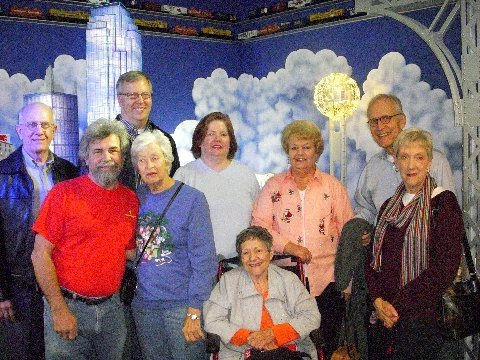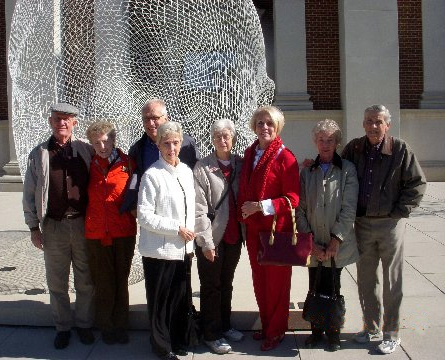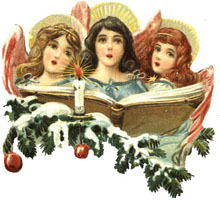 Most of the Christmas trappings that clutter our otherwise spiritual experience of the season seem to have come into full flourish during the Victorian era. Take, for example, the all-American Christmas tree. It may have started in 7th century Germany with the English missionary monk, St. Boniface, using a fir tree to teach the concept of the Trinity to the pagans, but until the mid-1800’s few people outside Germany knew what a Christmas tree was, except for a few German immigrants in the United States.
Most of the Christmas trappings that clutter our otherwise spiritual experience of the season seem to have come into full flourish during the Victorian era. Take, for example, the all-American Christmas tree. It may have started in 7th century Germany with the English missionary monk, St. Boniface, using a fir tree to teach the concept of the Trinity to the pagans, but until the mid-1800’s few people outside Germany knew what a Christmas tree was, except for a few German immigrants in the United States.
It was Queen Victoria, with her German-born husband Albert, who introduced dainty candle-lit Christmas trees to the English. Then President Franklin Pierce set one up in the White House. Once we Americans got hold of the idea, the little table-top “tannenbaum” quickly became a ceiling-scraping candle-laden fire-hazard that would have put fear into the heart of a Druid. By 1882, one of Thomas Edison’s associates, Edward Johnson, had created a somewhat safer tree. He hand-wired 80 red, white, and blue light-bulbs together and wrapped them around an evergreen tree creating the first “laboratory” electrically lighted Christmas tree. The first public display of Mr. Johnson’s idea came in 1895, when Grover Cleveland had one installed in the White House. As electricity became more widely available to the general public, Christmas trees spread like wildfire, so to speak.
Christmas music also came into full bloom in the Victorian period. Like the Christmas tree, it can be traced back to the 7th century. A strafing run through of the Christmas section of the hymnal can show us the evolution. Our hymnal, prior to 1980, included one of the original 7th century Christmas hymns, “A Great and Mighty Wonder.” This hymn by St. Germanus, originally in Greek, is still sung by the Eastern Orthodox church at Vespers on Christmas Eve. The earliest Christmas hymn still in our hymnal is “Of the Father’s Love Begotten.” This hymn, although originally in Latin, is English in origin and dates from the 11th century (when Latin was the official language of the Western Church). The text is pure theology and the mood is most mystical. It seems to have been inspired by the opening of St. John’s Gospel. It is not, however, directly derived from scripture; so it would not have been sung at mass. It was sung at Compline.
The earliest Christmas hymn in our hymnal which was permitted to be sung at mass is “While Shepherds Watched Their Flocks by Night”. It was written in the late 1600s by an Irishman, Nahum Tate. The text comes directly from the Gospel of Luke. Throughout the first half of the 18th century, this was one of only six hymns (two others for Easter, plus three communion hymns) that could be sung at Divine Worship in the English church. Psalms and Canticles were the only other music which the church allowed.
All that began to change with the emergence of the Methodists. Charles Wesley gave us “Hark, the Herald Angels Sing” in the mid-1700’s. Notice the tense change. We have shifted from “shepherds watched” (past tense) to “angels sing” (present tense). Wesley isn’t focusing us on what happened centuries ago at Christ’s birth, he is focusing on Christ’s birth as an event that is not bound by time and space. Wesley is trying to make Christ’s birth as real to us as it was to those who witnessed it live and in person. Another hymn from this period that expresses the same attitude about the meaning of Christmas is “Christians Awake, Salute the Happy Morn” by a friend of the Wesley brothers, John Byrom. It was written as a Christmas present to his daughter in 1749. This hymn can be seen as a sort of bridge between the 17th and 18th century perspective on Christmas. It includes biblical accounts of shepherds and angels, but the beginning and ending verses exhort us to involve ourselves on a personal level in Christ’s birth. John Byrom, by the way, was the inventor of “shorthand” and John Wesley’s journals were written in shorthand.
As we move into the early 19h century, we encounter one of the most beloved Christmas hymns world-wide: “Stille Nacht”. The stories about the Lutheran pastor and his organist writing this for Christmas Eve in 1818 because the organ was out of commission and using a guitar to accompany it are all true. This may be the first occasion of a purely sentimental hymn being used in worship. It’s like the Christmas equivalent of “Were you There”, which some folks like to sing on Good Friday. It may not do much to stimulate the intellect; but it can really get you in the gut. There’s a somewhat interesting story about how the song made it out of an obscure Austrian village church into the churches of the global village. It seems that when the organ repairman came to fix the organ, he asked what Christmas services were like without an organ. The pastor and organist told him their tale and then sang their little song for him. As the repairman went on his rounds throughout the neighboring villages, he related their story and song. The episode soon faded into distant memory until 1831 when a group of folksingers, the Zillerthal sisters, sang the song at a fair in Leipsig. A music publisher heard their performance and included it in a collection of Tyrolean folksongs he was getting ready to print. Austrian folk music, by the mid-19th century, was becoming all the rage in European and American music halls; and that’s where “Silent Night” became a hit song, on the theater stage. Now it is sung in almost every language of Christendom. The American standard translation was published in 1865.
By the time we are into the late Victorian period, the cup of Christmas sentimentality is overflowing. It is from this period that we get the almost maudlin “Away in a Manger”. (The story of Martin Luther, in the 16th century, writing this little lullaby for his children to sing is pure fiction.) But a new Christmas message is beginning to emerge: the social Gospel is being spread. After a trip to the Holy Land, the Rev. Phillips Brooks wrote “O Little Town of Bethlehem” for the Sunday school children at Holy Trinity, Philadelphia. Mr. Brook’s organist, Lewis Redner, wrote the tune. Many hymnals excluded the original 4th verse because of its then controversial social message. It was reintroduced in our 1940 hymnal and remains in the 1980 hymnal. In case you’ve forgotten, it’s the verse that talks about misery crying out as charity stands watching. Another hymn from the period with an even stronger social message is “It Came Upon the Midnight Clear,” by Edmund Sears. It has verses dealing with weariness, sadness, woes, strife, and warfare; not what we really want to think about when we’re trying to enjoy Christmas. The hymn does end with a hopeful allusion to Christ’s second coming, But still, once you get past the first verse, it’s kind of a Christmas buzz-kill. But that may be the whole point of the song.
We can get so caught up in all the sentimentality of Christmas that it becomes easy to either consciously or sub-consciously choose to ignore what the Incarnation is all about. Does it please our Lord to see us engaged in gross sentimentality or festive revelry at Christmas? Does Jesus really want a birthday party, or does he expect something else from us at Christmas time? It may interest you to know that some Christians denominations do not celebrate Christmas. They cite numerous biblical injunctions against it. One of the passages used against the Christmas tree, for example, comes from the prophet Jeremiah. In the 10th chapter, he says “For the customs of the peoples are false: a tree from the forest is cut down… people deck it with silver and gold; they fasten it with hammer and nails so that it cannot move. Their idols are like scarecrows in a cucumber field.” Could our Christmas trees, wreaths, and poinsettias be tempting us into idolatry? Think about the songs “O Christmas Tree, O Christmas Tree” or “The Holly and The Ivy.”
Jeremiah may or may not be calling our Christmas decorations idolatrous scarecrows; but his prophesy does warn us about idolizing some of our Christmas traditions. It wouldn’t seem like Christmas without them, but giving some of them up could actually be a sort of Christmas present to Jesus. There might also be other gift ideas in the Victorian Christmas hymns; like making a personal effort to bring help and comfort to those who are in misery, weariness, strife, or need?. Shouldn’t Christmas be about making sure there is more joy in Jesus’ heart than there is in ours?
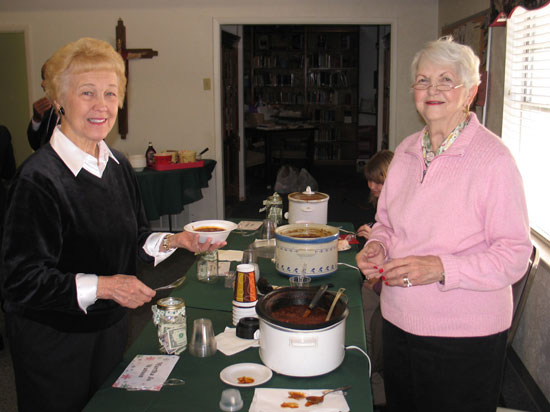
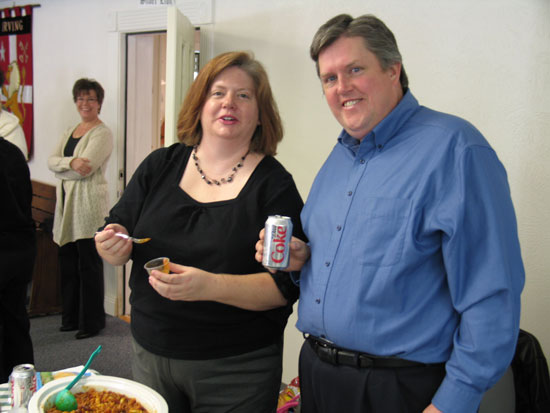

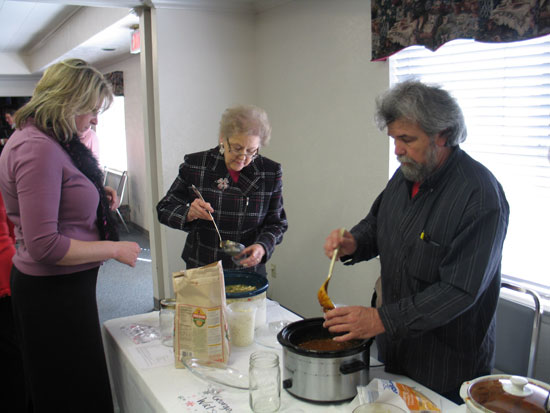
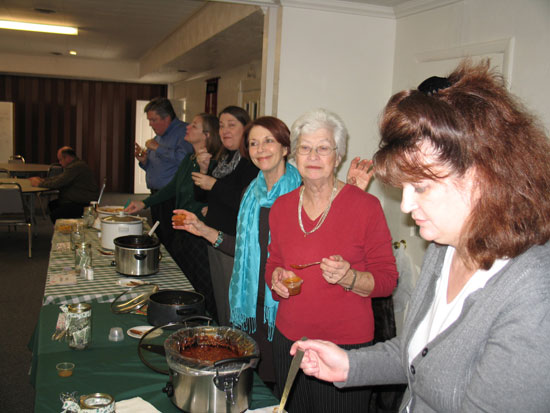
 On February 6, 2011, seven confirmands were welcomed into the life of the Church by Bishop James M. Stanton and the congregation of St. Mark’s. Bishop Stanton’s sermon: “Why are you here… why are you in the world? We believe that God created us all, in some way or other. But we live most of the time with serious questions about who we are, and why we’re here, and what it all means, and how can I know? We are strangers to ourselves. You know, that’s a good thing…”
On February 6, 2011, seven confirmands were welcomed into the life of the Church by Bishop James M. Stanton and the congregation of St. Mark’s. Bishop Stanton’s sermon: “Why are you here… why are you in the world? We believe that God created us all, in some way or other. But we live most of the time with serious questions about who we are, and why we’re here, and what it all means, and how can I know? We are strangers to ourselves. You know, that’s a good thing…” 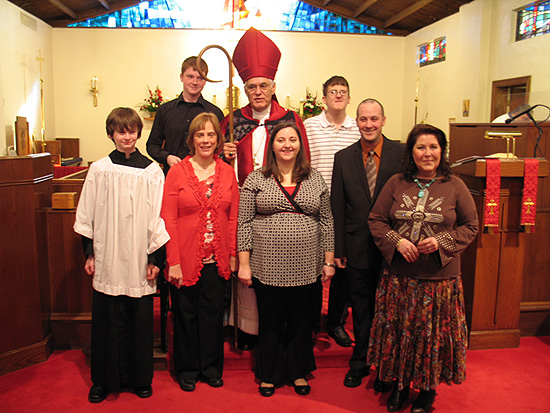
 Most of the Christmas trappings that clutter our otherwise spiritual experience of the season seem to have come into full flourish during the Victorian era. Take, for example, the all-American Christmas tree. It may have started in 7th century Germany with the English missionary monk, St. Boniface, using a fir tree to teach the concept of the Trinity to the pagans, but until the mid-1800’s few people outside Germany knew what a Christmas tree was, except for a few German immigrants in the United States.
Most of the Christmas trappings that clutter our otherwise spiritual experience of the season seem to have come into full flourish during the Victorian era. Take, for example, the all-American Christmas tree. It may have started in 7th century Germany with the English missionary monk, St. Boniface, using a fir tree to teach the concept of the Trinity to the pagans, but until the mid-1800’s few people outside Germany knew what a Christmas tree was, except for a few German immigrants in the United States. 